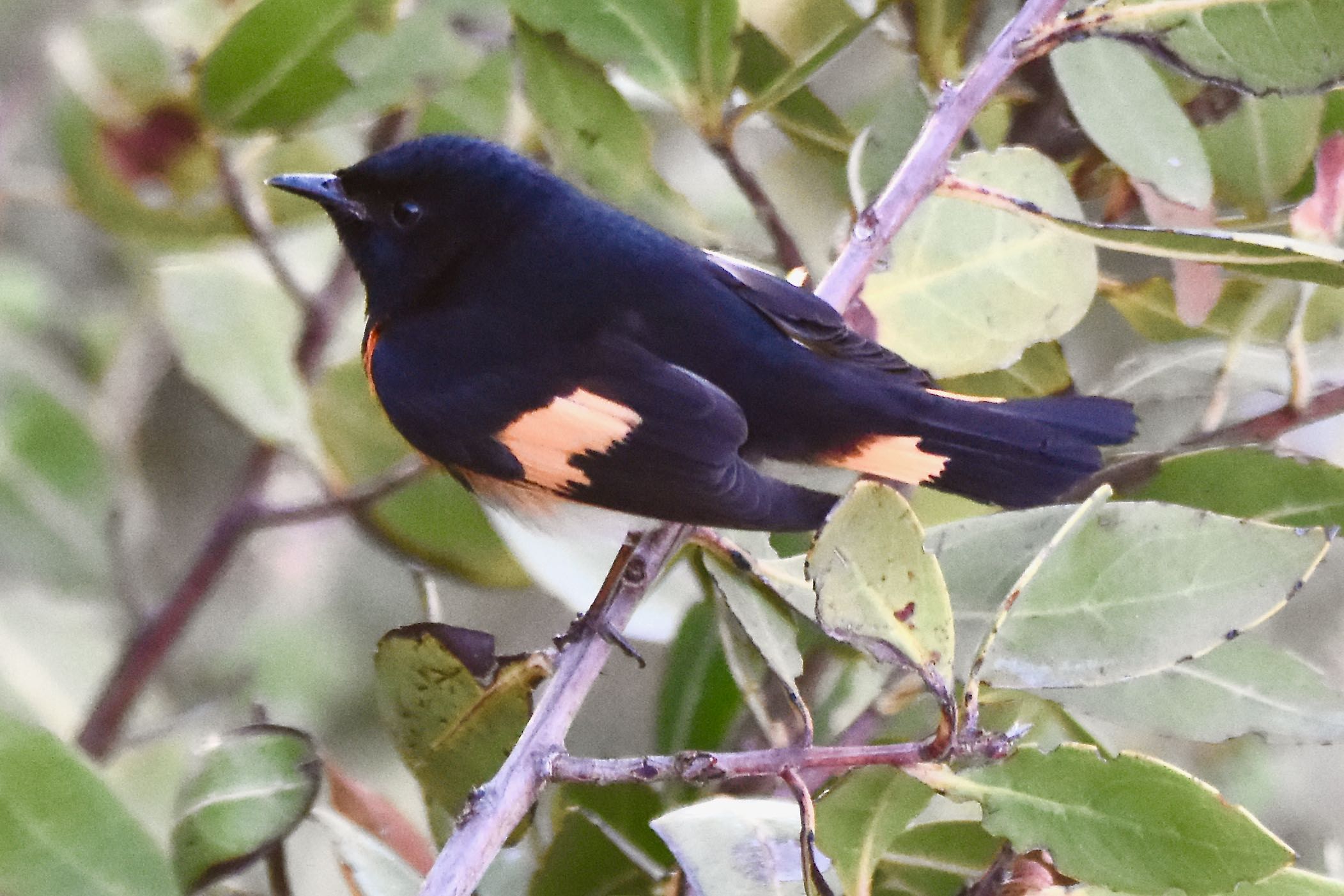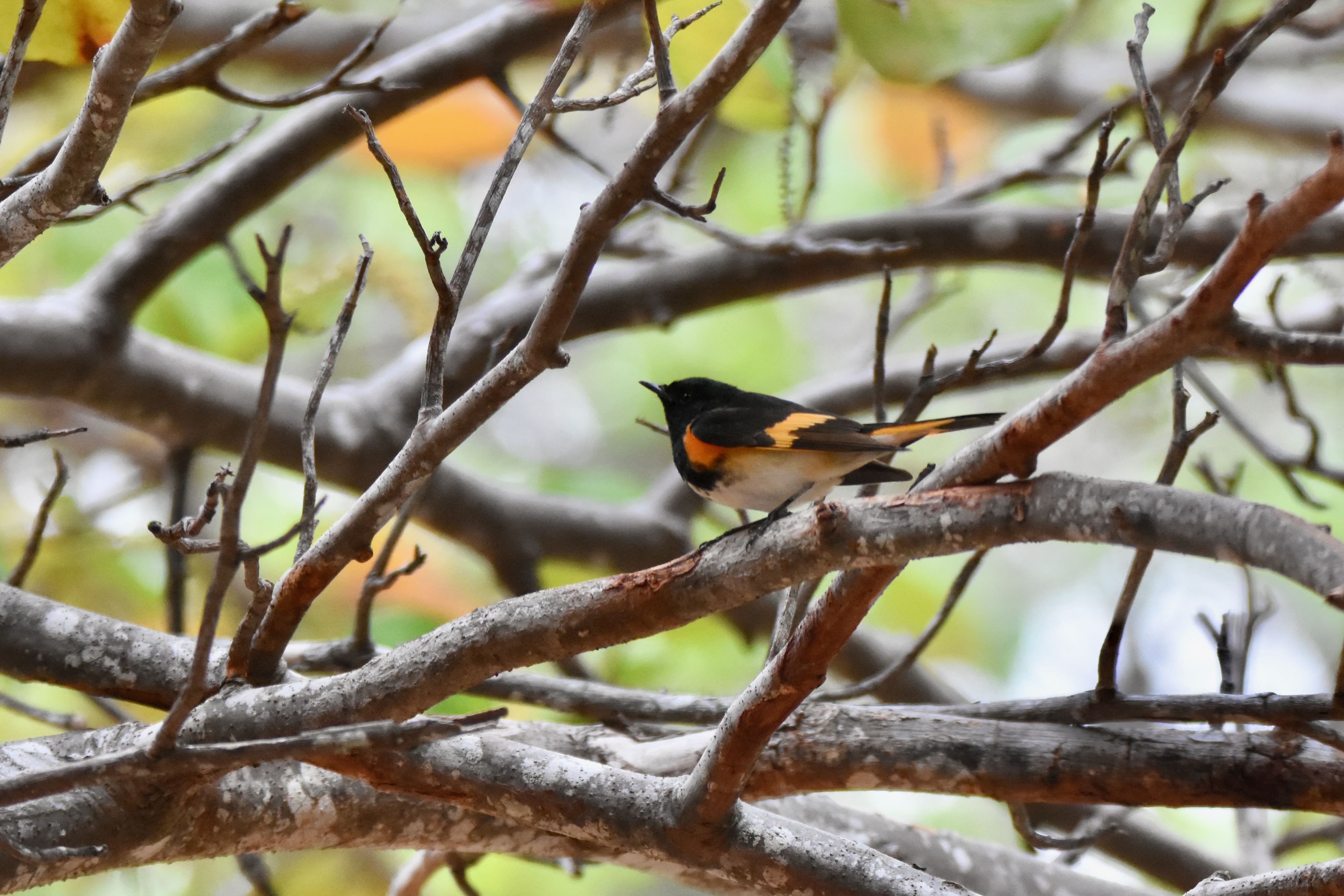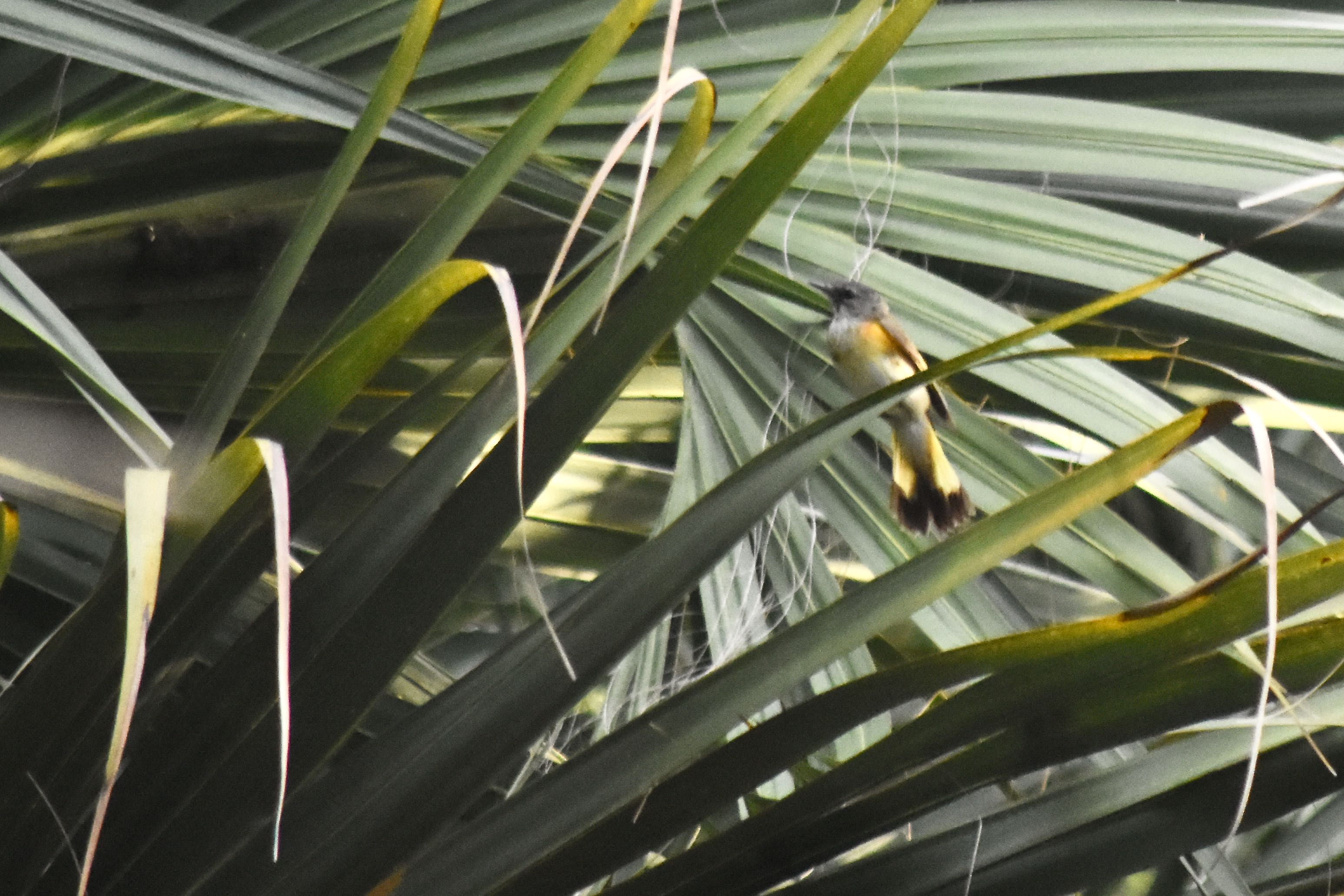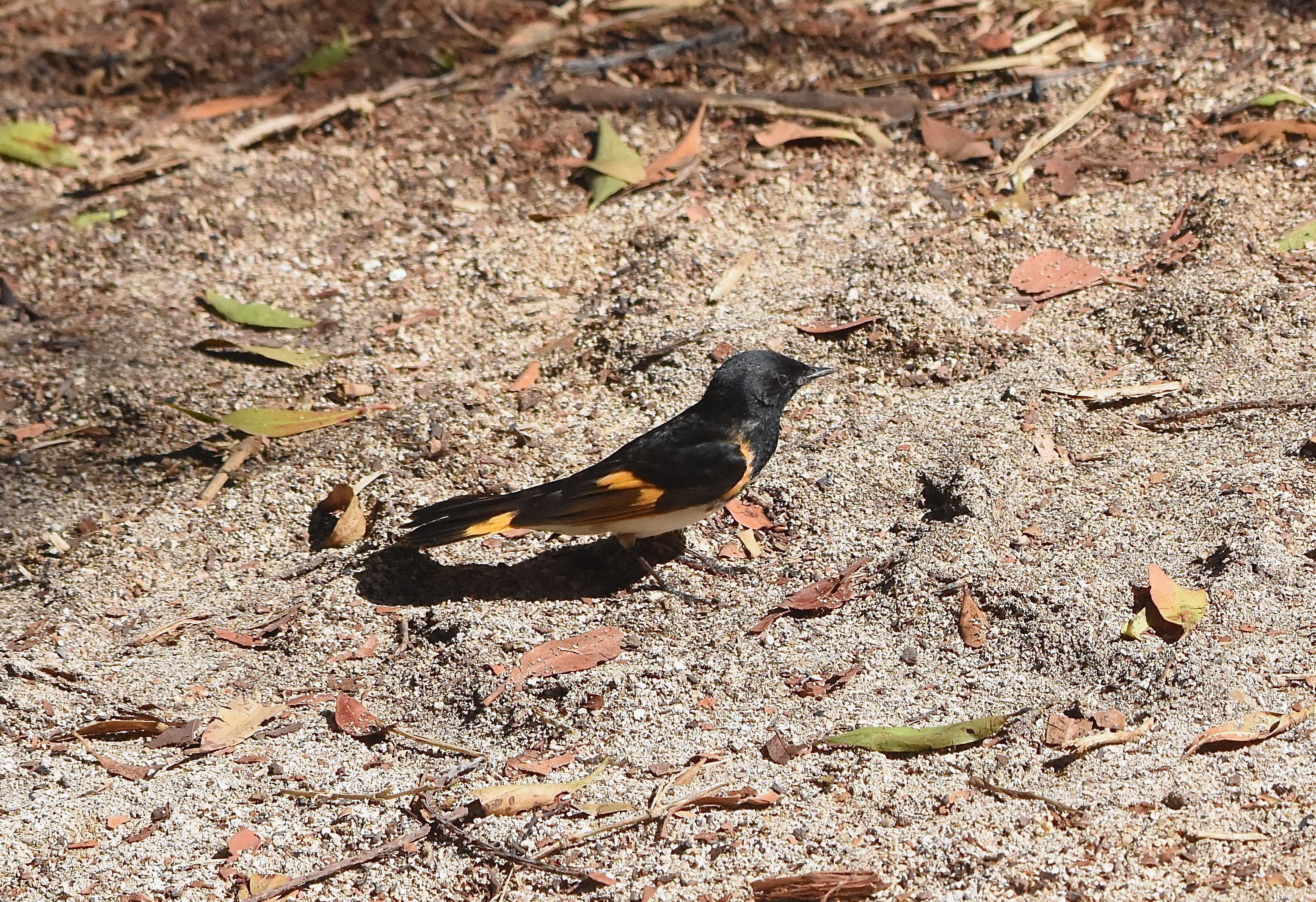
American redstart, photographed at Garden Key, Dry Tortugas National Park, Monroe County, in April 2017.
Let's call the American redstart the unwarbler, because of its distinctive coloring. No striations to decode. No wing bars to decipher. No caps or masks. Just unmistakably bold colors that make this bird easy to identify.
It's the bird that asks the quetion: what's black and white and red, yellow and orange all over? Setophaga ruticella, of course.
American redstarts are migratory visitors to most of Florida, merely passing through in the fall and spring on their way to or returning from more tropical settings beyond our shores. But some do spend the winter in South Florida. And there is some evidence that a few nest here, particularly in the Panhandle.
They are denizens of deep woods, usually near water, during the summer breeding season. In winter, or in migration, they're less picky, choosing to hang in almost any place with trees, including the 'burbs.
Their breeding range extends over most of the eastern and central United States from the Gulf to New England, and into Canada as far north and west as the Yukon Territory. In winter, they can be found throughout the Caribbean, Mexico, Central America and parts of South America.
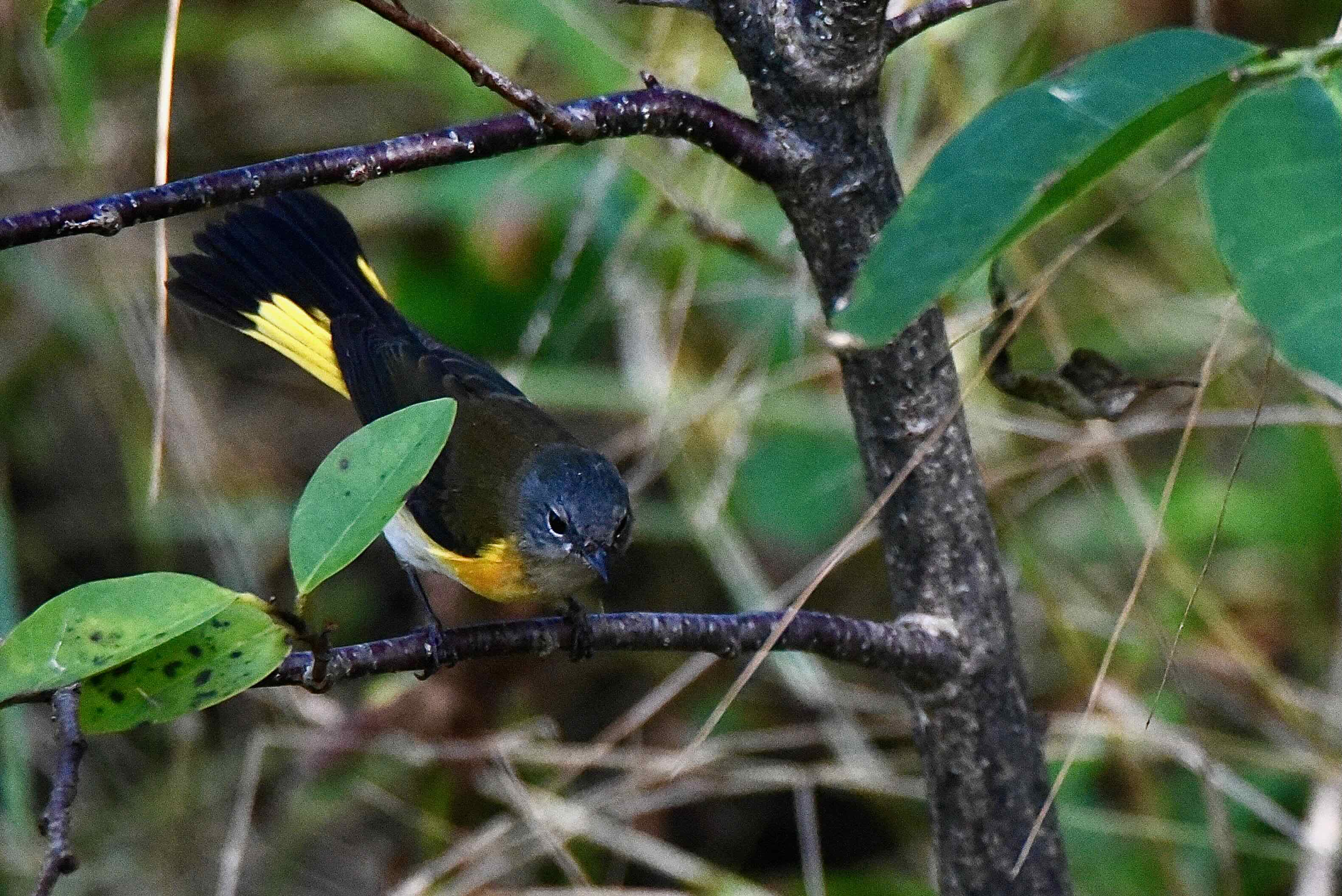
American redstarts are mostly insect eaters, flashing their bright colors to flush bugs from tree leaves and branches, then picking them off in flight. But they will also eat some berries as well.
They are medium-sized as warblers go, with a body length of four or five inches and a wing span that might reach seven or eight inches. Still small in the general realm of birds, however.
Females and first-year males lack the splashy colors of the adult male. They are more gray and yellow (see the photo below, far right). Males pick up the color in the fall of their second year.
Males are territorial, and will pick out potential nesting sites for their mates, but it's the female who decides where the home will be built. She's also the nest-builder, using fine materials such as strips of bark, grasses, hair, feathers, moss and lichens to weave together a small cup for her clutch of five eggs or so.
The eggs themselves require about 10 days to two weeks of incubation before they hatch. The young are capable of leaving the nest within a week or two. According to Cornell Lab, a male sometimes will mate with a second female while still raising the brood, but will concentrate most of his energy on caring for his first family. Once the offspring have fledged, the parents will split the group, each caring for half until they're fully ready to go out on their own.
American redstarts are members of Parulidae, the warbler family.
Dry Tortugas National Park

